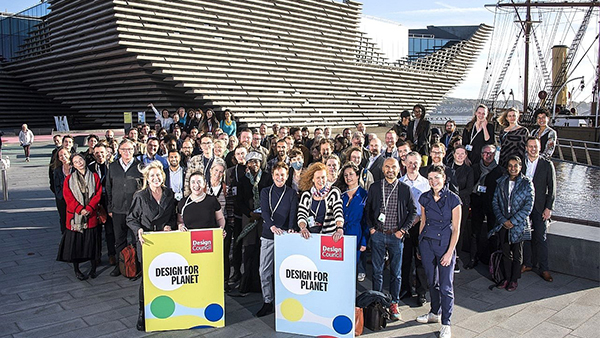This is a guest blog by Craig Sams FRSA, Founder of Green & Blacks organic chocolate and Whole Earth Foods. With the COP21 climate conference taking place in Paris in December, he argues for a greater focus on the role that farming that could play in making the transition to a low carbon economy more politically achievable.
Agriculture contributes 30% of the annual increase in global greenhouse gas emissions. This is because the vast reserves of carbon that once resided in soil organic matter have been oxidized into carbon dioxide, leaving behind degraded, eroding soils. The Food and Agriculture Organization of the United Nations (FAO) estimates that on current trends we have 60 years of farming left before soil runs out - clearly there have to be major changes in the way we produce food
This is the UN International Year of Soils 2015 - so the global focus of attention is, for the first time, on soil - the foundation of all life on earth. It is possible to reduce greenhouse gas emissions from farming while stopping the degradation of our soils. We can do even better than that – with a few practical changes agriculture can deliver net sequestration of greenhouse gases, not just a reduction in emissions. On August 31 2015, global food giant General Mills announced an investment of $100 million to reduce their greenhouse gas emissions by 28 percent. This will include sourcing products from an additional 250,000 acres of organic production. Jerry Lynch, the company’s chief sustainability officer pointed out that organic agriculture promotes soil that helps farms better endure droughts, heavy rains and pests, while pulling more carbon from the air and putting it into the ground in the process.
A 34 year trial at the Rodale Institute in Pennsylvania growing field scale crops shows that regenerative farming systems such as organic and agro-ecological can sequester 1 tonne of carbon per hectare, year after year. The Rodale trial figures show that if regenerative principles were applied globally to arable and pasture farming we could offset the annual increase in greenhouse gas emissions from industry, energy, conventional agriculture and transportation. Agriculture can become part of the solution, instead of part of the problem.
So what is government policy on agriculture? Mostly, business as usual. Industrial agriculture gets an estimated $350 million in subsidies globally. Forests, a vital carbon sink, are cut down to make fuel pellets for power stations such as Drax because of EU renewable energy targets.
However, change is afoot. The Climate Smart Agriculture Alliance brings together Governments and NGOs to advance new solutions to food production that protect soil from further degradation by increasing carbon-rich soil organic matter. This delivers a host of other benefits. Every kilogram of incremental carbon in the soil increases its water holding capacity by up to 20 litres, reducing the cost of irrigation. Organic matter is rich in microorganisms which assist water retention and nutrient delivery to plants. These microorganisms also act as a plant’s immune defense against the fungal and bacterial pathogens and nematodes that cause disease. This reduces reliance on fossil-fuel derived fungicides and pesticides, with consequent benefits to human health and to biodiversity.
The French National Institute for Agronomical Research states that if we adapted farming practices to boost organic matter in soils by 0.4% a year, it would compensate for global greenhouse gas emissions. France’s Agriculture Minister Stephane Le Foll recently commented: “We could stock the equivalent of anthropogenic carbon gas produced by humanity today. Stocking carbon in the soil is organic matter in the soil, organic matter is fertilizing the soil.
The benefits of regenerative agriculture as a carbon sink can be further enhanced by the use of biochar - a finely ground charcoal used as a soil improver. It increases the microbiological activity in degraded soil, supporting the transition to more sustainable farming methods. Biochar reduces nutrient leaching from soil, contributes to enhanced water retention and reduces nitrous oxide emissions. Biochar has a centuries-long residence time in soil, so it acts as a long term carbon sink for woody biomass such as rice husks and forestry thinnings which would otherwise decompose or be burned, returning to the atmosphere as CO2 or methane.
Critics of regenerative farming methods cite increased costs. However, the externalized costs of industrial agriculture include soil degradation and loss, greenhouse gas emissions, pesticide harm to human health, biodiversity loss and rural unemployment. These costs are being borne by society as a whole.
The FAO has declared that regenerative farming protects and increases natural resources and strengthens communities ‘thus improving food security by addressing many different causal factors simultaneously.’
The COP21 climate conference is in Paris in December, and it presents an opportunity to take action. Every participating country will make INDC commitments (Intended Nationally Determined Contributions) to reduce emissions. The economic consequences of reducing fossil fuel use can be destabilizing, but regenerative agriculture can restore the world’s dangerously degraded soils and make the transition to a low carbon economy more politically achievable.
Related articles
-
A design revolution for the climate emergency
Joanna Choukeir
Joanna Choukeir on Design for Planet, the global gathering of designers during COP26, and the changes design must make.
-
The public are ready to go further and faster on net zero
Anthony Painter
The public are ahead of policy-makers and, indeed, most of the business world. COP26 is an enormous opportunity to catch up. Global leaders should take it.
-
Changing fashion from the ground up
Josie Warden
How can our places shape a different future for fashion? Introducing Leeds Fashion Futures, a partnership with Zero Waste Leeds.




Be the first to write a comment
Comments
Please login to post a comment or reply
Don't have an account? Click here to register.